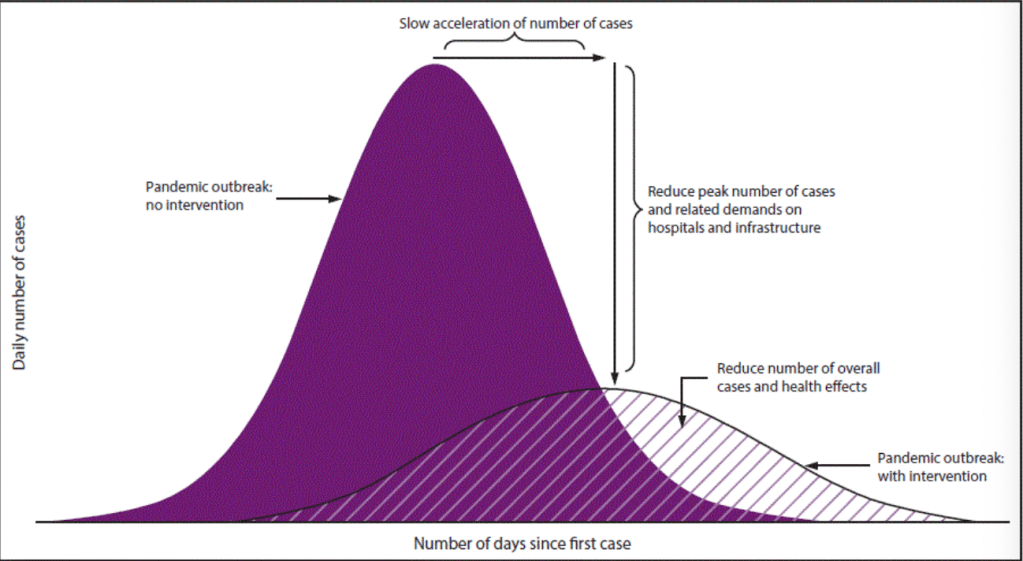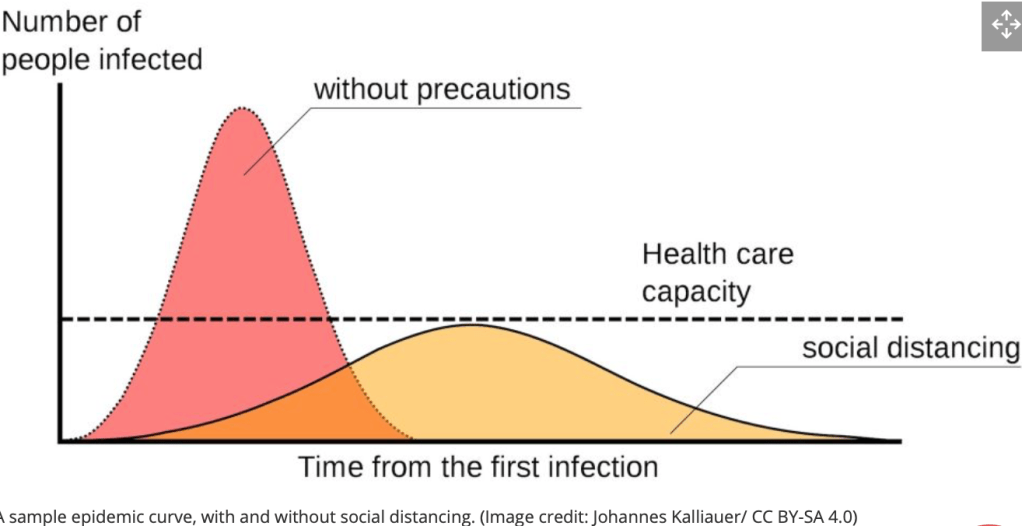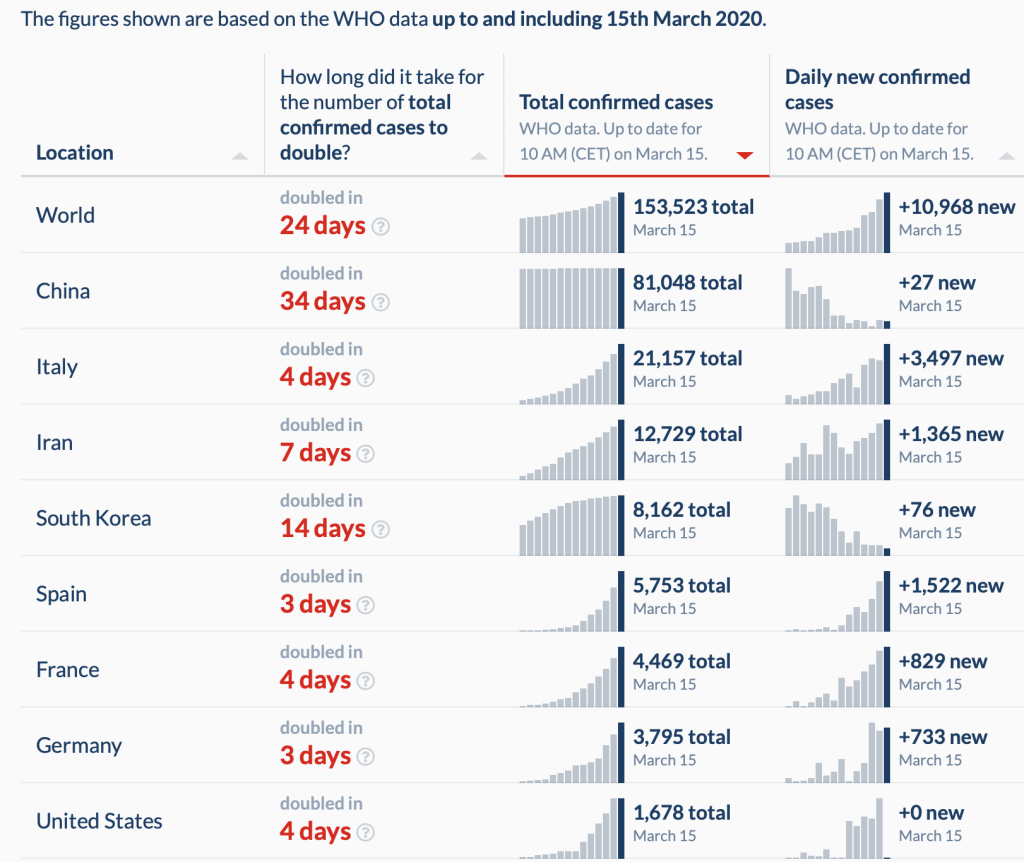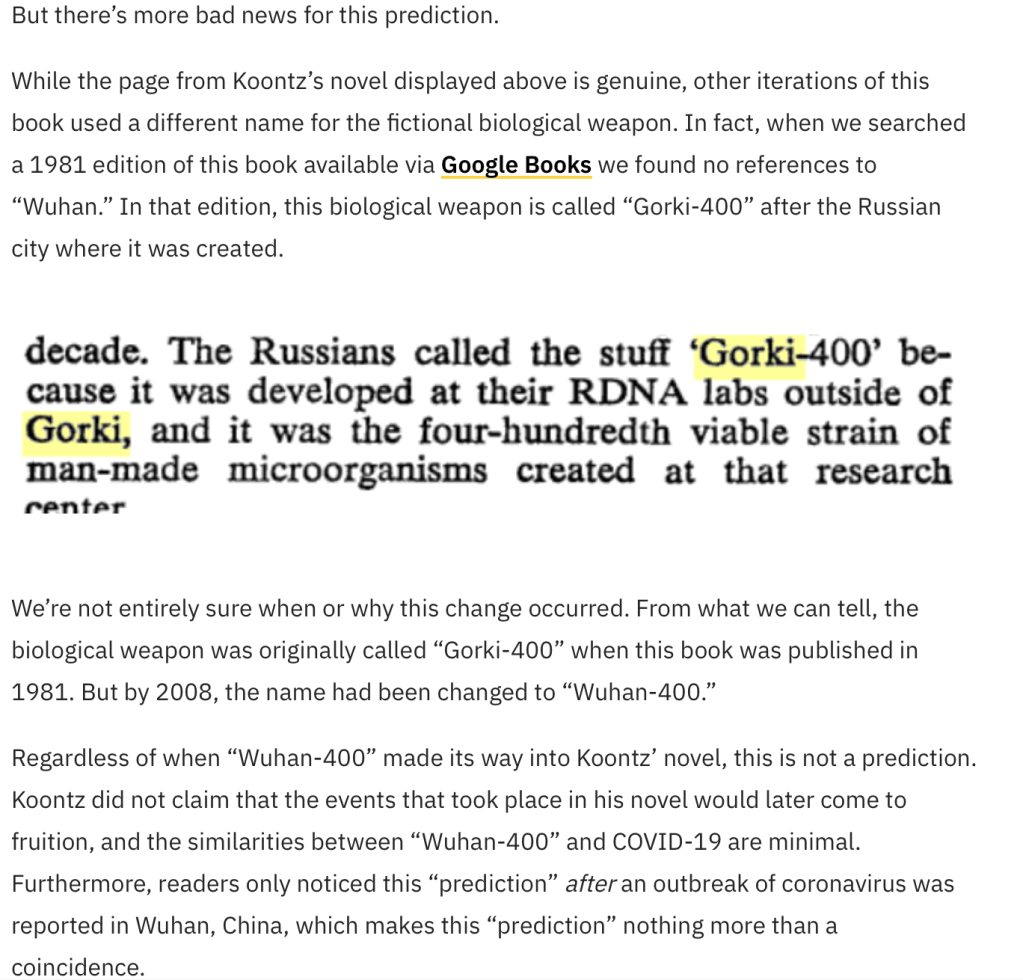We have only two scenarios as we approach the April 12 deadline of the Luzon Lockdown period.
It either gets extended a few weeks more or it gets lifted.
Either way, the bottom line is not only the human toll this pandemic is causing but the economic toll as well.
COVID-19 has changed the paradigm of what is the “new normal”. The millennials and the more recent “alphabet” Generations have never seen anything like this. Neither have we.
Two scenarios will play out as we go towards the end of the second week of being “locked down”.
Let’s be realistic. The number of new cases (and sadly new deaths) WILL NOT go down overnight. Or soon, for that matter. So let’s keep our expectations real. Locking down everyone for the next month will not make the statistics decline NOW. Remember, it took China in general and Hubei in particular almost 3 months to bring their numbers to where it is today. But they had a different model. And isolating Wuhan from the rest of China and the rest of the world took an economic toll on the country. But China will always be China. They are, after all, an economic powerhouse. They can build a hospital dedicated to managing SARS or COVID-19 in a matter of 10 days.
Keeping it real, the Philippines will always be the Philippines. The eternal beggar for donations. Let me call a spade a spade. We recognized this problem early in January. There was one death in three cases. From a foreigner who traveled from Wuhan, China to the Philippines via Cebu into Dumaguete and finally into Manila. He later passed away in a government hospital. That alone should have served as a red flag.
How we even got from that point to where we are today is a different story altogether. But the answer partially lies in what President Duterte said – The Kit is the Kit.
BEST CASE SCENARIO
The 4-week lockdown will hopefully slowly bring the number of positive cases down in the remaining 2 weeks. By “containing” everyone and presuming everyone is positive for the infection or are potential carriers (note: asymptomatic), we make the viral “infection” run its normal course. People within the same household who probably have mild to no infection will recover on their own. If enforced properly, this will curtail ongoing community transmission. Those that progress to being critically ill are then hospitalized, isolated and hopefully, recover with minimal sequelae.
The numbers should gradually slow down. The “curve” will flatten. The limited healthcare resources will not be usurped. And perhaps in another two months, life will breath new air.
WORST CASE SCENARIO
Then again, the success of a lockdown is a hypothetical presumption. It may work best for highly disciplined countries. Those with very few informal settlers. Those with better healthcare resources. And those with best economies because they have the means to feed and fend for its people. Like a zombie movie out of Netflix, the gated communities will probably be the last or least affected because they have the most resources.
How long do we lockdown and what are our grounds for endpoints? The anatomy of disappointment are expectations. As we near the date, are we seeing what we want to see? Why or why not? Should we extend the lockdown? If we do, how long do we extend?
Metro Manila is a highly dense city. We have more people here than Wuhan alone. More than 15% of people in the Philippines residing in Metro Manila. While there are many gated communities in the metro, they comprise only 1/3 of the population. Majority are informal settlers. How to quarantine a family of 10 that live in a 15 square meter area or a community whose homes are a thin plywood board apart with access alleys measuring 1 meter in width is a virtual nightmare.
So, yes. We need to get out of this lockdown in the next few weeks. Extending it is an option but a calculated risk on the economy of a third world nation like ours. As the poor would say, they will not die of Coronavirus but of hunger. We cannot keep giving them dole outs. Micro, small and medium enterprises will eventually crumble, with the smallest losing the most and most likely will be unable to recover at all. People will lose their jobs as these owners will need time to recuperate losses. Half of them will not be able to bounce back. The remaining half will struggle against the tide. There will be massive lay offs. Riots, violence, looting, unrest are worse case scenarios.
Is the lockdown the only solution?
No. And we need to get out of this rut quickly while taking into account the lessons learned from how other countries are managing their own crisis.
That’s why we need a plan B. This government should learn to shift gears now by appointing experts who understand crisis management and not rely on amateurs who only have political clout as the qualification for being appointed into public office. Sadly, some Filipino politicians use any form of crisis or disaster to be able to tap into government funds for their personal gain. Greed, power, and ambition are well entrenched in the DNA of corrupt politicians who run for public office because to them, it is a business enterprise. For a country like ours, it is a family affair.
As the various cities and provinces move into lockdown mode, the longer the time to relief, the more the economy will take the brunt of the pandemic. It has hurt more affluent nations already. Imagine the impact it will create in a small country like ours whose financial reserves are being depleted to sustain the fledgling business sector and the jobless.
The cash assistance program of the government IS THE WRONG solution to the current crisis. It is not a sustainable solution. The small patches being addressed include giving cash assistance to the informal settlers and those unemployed due to the crisis. Which I personally think is a bad idea. This is a problem that will last into Plan B. Which means that the government will need to sustain the micro, small and medium enterprises in a time of difficulty. They will need to give up more than just dole outs to the poor. The question is, are they willing to?
This would mean not collecting taxes, SSS, Pag-Ibig, Philhealth, GSIS and other contributions for an agreed period of time. This would also mean that losses can be claimed against taxes. Loan reprieve should not be voluntary but mandatory. All banks and other lending agencies should be mandated to require those who have existing loans if they wish to restructure their loans to lower rates. It is unfair that current lending rates have been lowered but not adjusted for those whose loans are locked in at a fixed rate at a time when they borrowed money from them. Those who are willing to hold off payment for say, 3 months, should be allowed to do so in order to recoup the financial losses of this lockdown. Local governments should be mandated to provide a reprieve to local businesses as well. Rebates in business permits can be given. For example, for those that pay quarterly instead of annually, the second quarter payments should be waived. While the business permit may be based on the gross income of the company in the year before, it should be able to assist the local business sector these unexpected extraordinary losses. In addition, it should be fair in next year’s assessment when paying for a mayors permit. (I am sure everyone knows that the LGUs turn a blind eye when it comes to the business permits. They will not believe the income tax statements you declare and insist their own computations.) Reprieve from rental of business establishments where the offices or stalls or stores in malls should be granted as per duration of the lockdown. In short, greed must be tempered from all sectors.
Sustaining the smaller and medium enterprises is essential. The aftermath of the pandemic will impact not only on health and lives of everyone but on the economic repercussions of the lockdowns. Let us face it, at the end of the day, it is those who have the least in life that suffer the most. If these small and medium enterprises close, there will no jobs to go back to. And everyone loses.
PLAN B
There are two models that can be used. The China experience (total lockdown) or the South Korea experience (no lockdown at all). The people in the government can integrate the experience of both countries and perhaps create a hybrid one for the Philippines. Using either of models (China or South Korea) ALONE will not work because our economic structure is fragile and poor.
The New York Times published an interesting article on “How South Korea Flattened the Curve” https://www.nytimes.com/2020/03/23/world/asia/coronavirus-south-korea-flatten-curve.html. In a nutshell, Fisher and Sang-Hun point out the strategies on how to contain the coronavirus without shutting down the economy. The downside? It may not work abroad.

The article points that the lessons, “while hardly easy, appear relatively straightforward and affordable: swift action, widespread testing and contact tracing, and critical support from citizens.” The four lessons are:
Lesson 1: Intervene Fast, Before It’s a Crisis
We were there in the beginning of this war. Three cases all foreigners. One death among them. Then we were stumped. Too few testing kits were at our disposal. Even up to today, we’re stuck with the bureaucratic red tape and the parasites and opportunists who take advantage of their positions in government to overtake the queue or by-pass the algorithm on who we prioritize for testing.

We intervened ahead of the world. Our major mistake was the mixed messages being sent by various agencies. Basic epidemiology would have taught us that if there was 1 death in 3 cases, the overall case fatality rate is 33% for the country. A number far too high from the average case fatality rate of 4-5%. Which means we were not picking up the real numbers. To have one casualty from the virus, you needed to find at least 25 cases.
But the virus has arrived. And the traditional response may not be the solution here.
Lesson 2: Test Early, Often and Safely
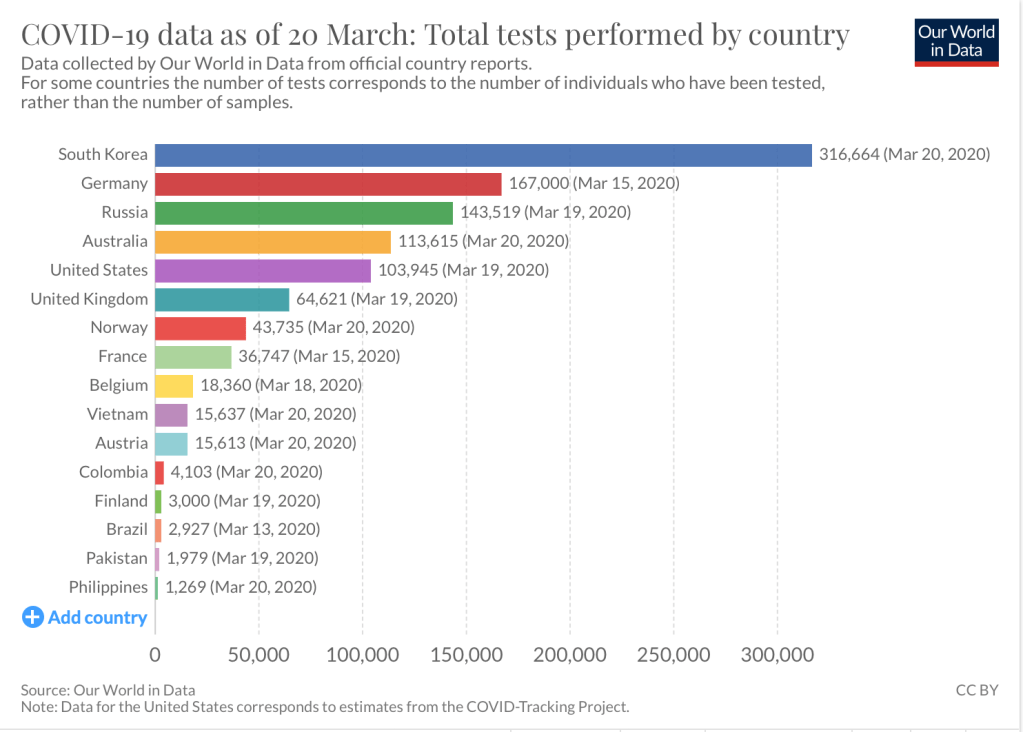
Culled data as of March 20 shows how far behind we are when it comes to testing. As the kits came in last week, the numbers began to swell. Everyone wanted to get tested. Understanding testing is vital in the decision on whether we test those at risk, those exposed, those at highest risk and/or test everyone?
But should we test everyone?
No. That would be a waste of resources. And may provide a false sense of security.
Like any laboratory test – reliability and accuracy is crucial. The tests should be be done in a safe place by well trained people who pass accredited and quality standards. In a nutshell, the validity of a testing kit will need to get verified. Results can vary between 30-60% accuracy. Other reports include 10-30% pick up rate depending on what you use. And are dependent on the timing, how the specimen was obtained and transferred, the severity of illness, the viral load and of course the way the specimen is run in the laboratory. These factors alone will make testing in a country with 7,641 islands a strategic impossibility.
The model used in Korea is opening more testing centers. The question is – do we have enough testing centers that fulfill the requirements for biosafety in handling specimens for these tests – in the country? The answer is a NO. Even if we beef up capacity, it will take months before we can have enough accredited laboratories for testing along.
To show you the model of South Korea, here is what they did:


This is most unlikely easy to put up in the Philippines. Hygiene, the very basic tenet of infectious disease is difficult to enforce in a community that lacks water, basic toilet facilities, and garbage disposal. Ignorance is also important to manage, doctors included.
What can we do realizing these limitations?
After the curve sees some flattening (which won’t be anytime tomorrow), mitigating the spread is vital. The key is to do testing on EVERY SUSPECTED CASE (not on everyone). This way we can conserve resources. All patients who are positive, regardless of severity of symptoms should be admitted to a designated COVID facility. Since schools have been closed, public or private schools can be used as COVID facilities for those that DO NOT have severe symptoms that will require hospital care. Food, water, and isolation is all that is needed. Making them stay AT HOME in the community will place more people at risk. Knowing the Filipino mentality and culture, home quarantine will not work.
Lesson 3: Contact Tracing, Isolation, and Surveillance
The Department of Health through their Epidemiology Bureau does a lot of contact tracing. The challenge is the patient. Some (if not many) of whom are afraid to reveal they have come in contact with patients for fear of being positive for the virus and the idea of being isolated. In short, people must be willing to lose a part of their privacy as a necessary trade-off for the good of the community.
Here is the model used in South Korea:

For all the technological wizardry of this nation, and how socially connected Filipinos are with their gadgets and other platforms, creating an app similar to this is a walk in the park. Two large telcos – Globe and Smart – should be mandated to work with the government in providing free data to those who will eventually need to use this app during self-quarantine.
Lesson 4: Enlist the Public’s Help
And this is where it gets a bit tricky.
Our bayanihan spirit defines us as Filipino race. But sadly that same spirit isn’t a consistent one. When people do things in order to be recognized as heroes in the end, we all end up as losers. Finding recognition at the heart of an outbreak of this proportion is not a solution. It is a problem. While government needs to listen to suggestions from private sectors, the private sectors should be able to sit down and work with the government on various matters. For example, certain corporations can help at procurement of PPEs and face masks (eg. banks and other lending institutions), while others focus on their special fields (telecommunications, food manufacturing, etc). We don’t ALL have to donate food. Equipments, health facilities, testing kits, disinfectants, etc are at the core of lacking in support. Let’s segregate it. And it would be fantastic if we had only ONE keeper of funds for the private sector donations that would turn it over and do accounting with ONE recipient of funds from the government sector (perhaps the Department of Finance). This way, accountability is transparent.
LIGHT AT THE END OF THE TUNNEL
Either way, the virus will disappear slowly.
Will it ever go away?
Scientifically speaking – No.
At best, after the dust has settled, we will understand how to recognize early this disease, manage the infection and hopefully find a treatment, and discover a vaccine.
The next two weeks will be crucial. It will be a defining moment on whether we proceed to doing mop up operations after the war or prolong the war. This invisible enemy in our midst is so far winning the war. A measly virus that has claimed lives, disrupted economies, changed the normal way we live and breath and engage with families and friends has the upper hand now because we hid under the rug the red flag two months ago when a foreigner died of COVID19 in our country.
The perpetual beggar stance of our nation is disappointing. We have billions to spend on intelligence resources, private planes and foreign travel and yet we wait for donations for – THE KIT.
The next two weeks is crucial. We either have plan B or the virus continues to decimate us medically and economically.
This government can have its most defining moment now or be the ultimate lackey because no one will ever forget this pandemic that will forever be etched in the history of science and economics. Ever.


